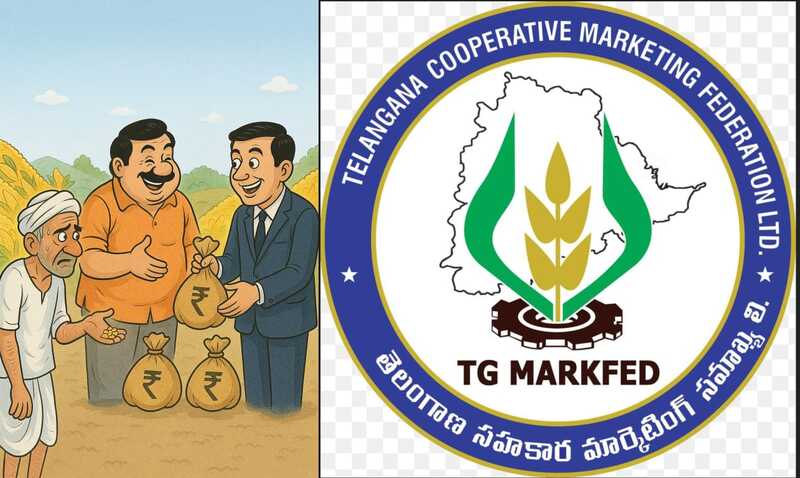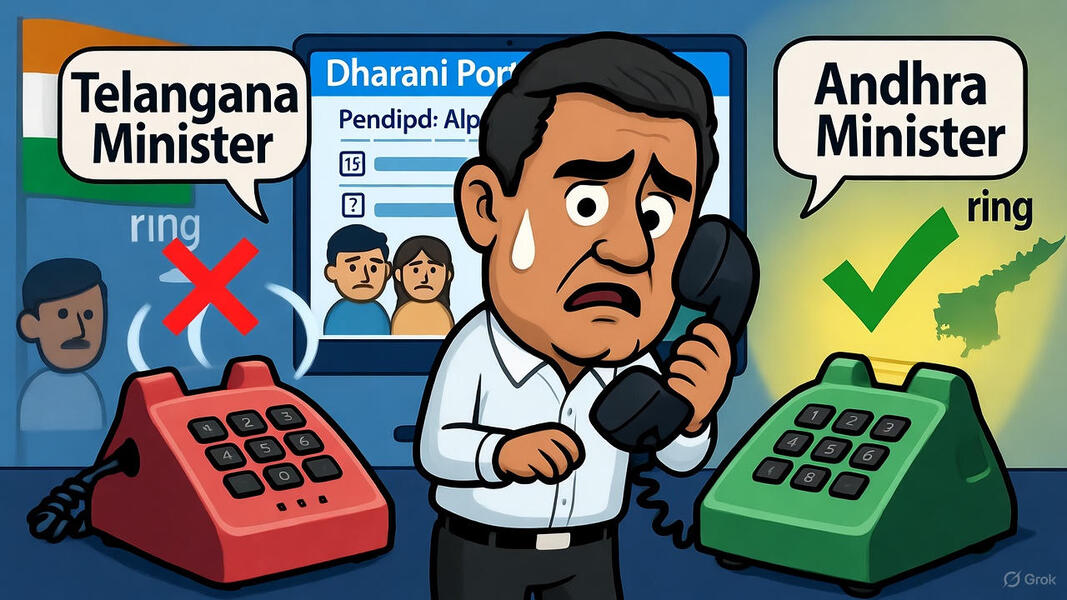- Jowar purchased last year sold now at a very low price
- Around ₹1,000 loss per quintal compared to the price paid to farmers
- Last year’s Minimum Support Price for jowar was ₹3,180, but it was sold for just ₹2,141
- Current open market price is around ₹2,800 — even by that, there’s a minimum loss of ₹60 crore
- Traders profit while officials remain silent and inactive
Article Today, Hyderabad:
Markfed has faced a massive financial loss of Rs.93 crore, and the reason is poor planning and careless decisions by its own officials. Many are now blaming a possible deal between a few officials and private traders for this loss. The recent sale of jowar (sorghum), which was bought last year, has become a clear example of this problem. Last year, Markfed bought jowar from farmers at Rs.3,180 per quintal — the Minimum Support Price (MSP). In total, the organization purchased 93 lakh quintals. But now, almost a year later, it sold the same jowar to traders at just Rs.2,141 per quintal. This resulted in a shocking Rs.93 crore loss. Even if we compare the selling price to the current open market price — which is around Rs.2,800 per quintal — the loss is still more than Rs.60 crore. This has raised serious questions about Markfed’s functioning and the role of its officials.
Delay in Sale, Rise in Loss…
Markfed bought jowar during the last rabi season. Instead of selling it soon, they stored it in godowns for nearly a year. Normally, storing jowar for too long can cause it to get damaged — pests can spoil it, and its quality drops. But the officials kept the grain unused in warehouses, showing a clear lack of responsibility.
About six months ago, tenders were called to sell the grain. But the tenders were cancelled, saying that the prices were not good enough. This happened twice. Only in the third round, recently, a final deal was made. But even now, the price was just Rs.1.50 higher than what was offered six months ago. Officials acted as if this was a big success, though the truth is that the price is still far below the current market rate.
At present, hybrid jowar is being sold in the open market at Rs.2,800 to Rs.3,000 per quintal. Markfed is also now buying new jowar from farmers at Rs.3,371 per quintal. In such a situation, why did they sell last year’s grain to traders at just Rs.2,141 per quintal? That’s the big question. People are asking: why was the sale delayed so long? What were the officials doing for one year? Many believe that some Markfed officials worked together with traders and sold the stock at such a low price to benefit them. This suspicion is growing stronger across the farming and political circles.
Markfed Sinking in Debt
Markfed is already stuck in deep debt — it owes thousands of crores. Every month, it has to pay huge amounts in interest. When they sell grain at such low prices, it becomes even harder to repay loans. On top of that, storing the grain for such a long time added more costs — such as rent for warehouses and maintenance expenses. Why did they keep the stock for so long without selling it? Was there a real reason — or was it done on purpose? People are now raising doubts not just on Markfed officials, but also on senior agriculture department officers. Did they know what was going on? Did they ignore it? Or were they also part of the delay? There are even allegations that the delay was planned — just to allow traders to buy the grain later at a cheaper price. Such allegations have increased after this massive loss became public.
We Cancelled Tenders Twice: Markfed MD
Markfed’s Managing Director, Srinivas Reddy, gave his explanation. He said there were some reasons for not selling the grain earlier. He explained that the first two tenders were cancelled because the price offered was too low. Now, in the third tender, the price was slightly higher — around Rs.1.50 more per quintal. So, Markfed decided to sell the jowar. He added that traders will soon collect the grain from the godowns. But this explanation has not satisfied critics. They are asking: when the market rate is so much higher, why did Markfed settle for such a low price? Was this really the best option? Or was it done to help certain traders?
Markfed scam on commissions!
- Who gets how much?
- Who are the key role and masterminds?
A special Report in Tomorrow’s Edition…



